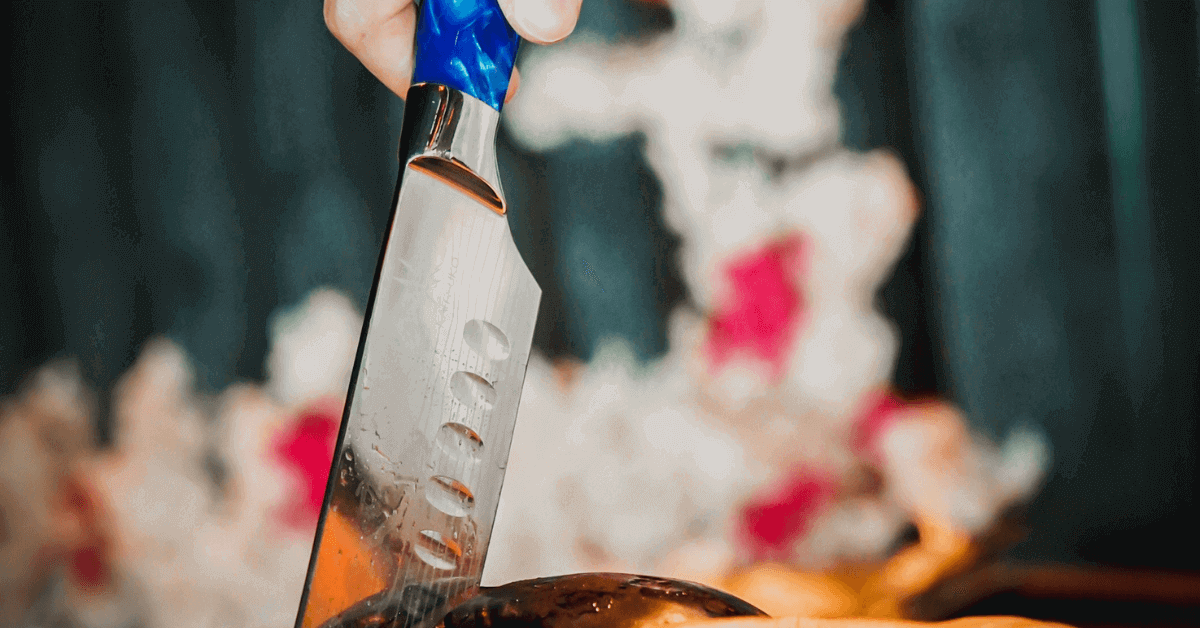What is the use of the Santoku knife?
For home use, Santoku knives are currently the most popular.
The reason why it is called Santoku is because it can be used for all types of fish, meat and vegetables. For this reason, its blade is thinner than a willow blade and thicker than a thin blade.
Santoku knives are also known as "Bunka knives" and are suitable for cutting meat, fish, vegetables and any other type of food. They are so easy to handle that it can be said that "you only need one at first".
Naturally, it is not suitable for cutting bones from a cow or splitting the head of a sea bream. The thickness and shape of the blade make it a knife that can be used for a wide range of tasks, such as peeling vegetables, cutting meat, filleting fish and even sashimi.
This is a really useful knife for home cooking.
Why is the Santoku knife most used at home?
It may not be suitable for advanced tasks, such as those performed with specialty knives. It would be difficult to make wavy peels as with a thin-bladed knife, or to pull sashimi in one stroke as with a willow-bladed knife.
However, because it doesn't specialize in just one type of cutting, many cooks use the Santoku as an all-purpose knife.
For this reason, it seems to be a practical item for cooking enthusiasts, so much so that it is said that if you have a Santoku knife, you don't need other knives at home.

However, if you only have one knife, the blade gets damaged quickly, and considering that you have to take it out to sharpen it, it would be better to have at least one Santoku knife and one Gyuto knife. It is more efficient to use mainly a Santoku knife for vegetables and a Gyuto knife for meat and fish. It is also recommended to have a Santoku knife as a "main knife" and a smaller Gyuto.
This is why each manufacturer offers several different blade lengths, and the handles are also made of resin, integrated into the blade or wood, and also feature detailed innovations such as the location of the center of gravity to facilitate use.
Number of Japanese Knives a Home Cook Should Have
For an amateur cook, it is not essential to have all seven knives presented below. In fact, four of them may be enough if you cook infrequently.

We don't think most people would use a tuna knife, a conger knife, an eel knife, a noodle knife, etc. On the other hand, if someone says, "I use an eel knife or a hamo knife," they are probably a professional. However, I know a chef who uses a willow blade to deftly cut through the bones of a pike conger.
However, with four knives from the selection, you can accomplish a large number of tasks. What is recommended is to have a knife suitable for Western cuisine, a carving knife, a small knife and a Japanese knife .

We believe Santoku knives are safer for beginners.
Santoku knives are widely used in Japanese homes because they are versatile knives made in the Japanese style. They have features that suit Japanese food culture, such as small dimples that prevent food (especially raw fish) from sticking to the blade.
If you don't have a particular preference or expectation, we recommend choosing a Santoku knife if you want to start cooking.
Which knife should you choose to start with?
Gyuto is recommended for people who love cooking with a desire to become an expert. However, later on, they will need a knife for each type of cutting.
Many professional cooks use a Santoku , and it's easier to cut meat and fish with it.
If you enjoy cooking and have several other knives or are considering purchasing one in the future, we recommend the Santoku for its versatility and ease of handling.







How to properly sharpen a knife?
How to sharpen a knife with a water stone?